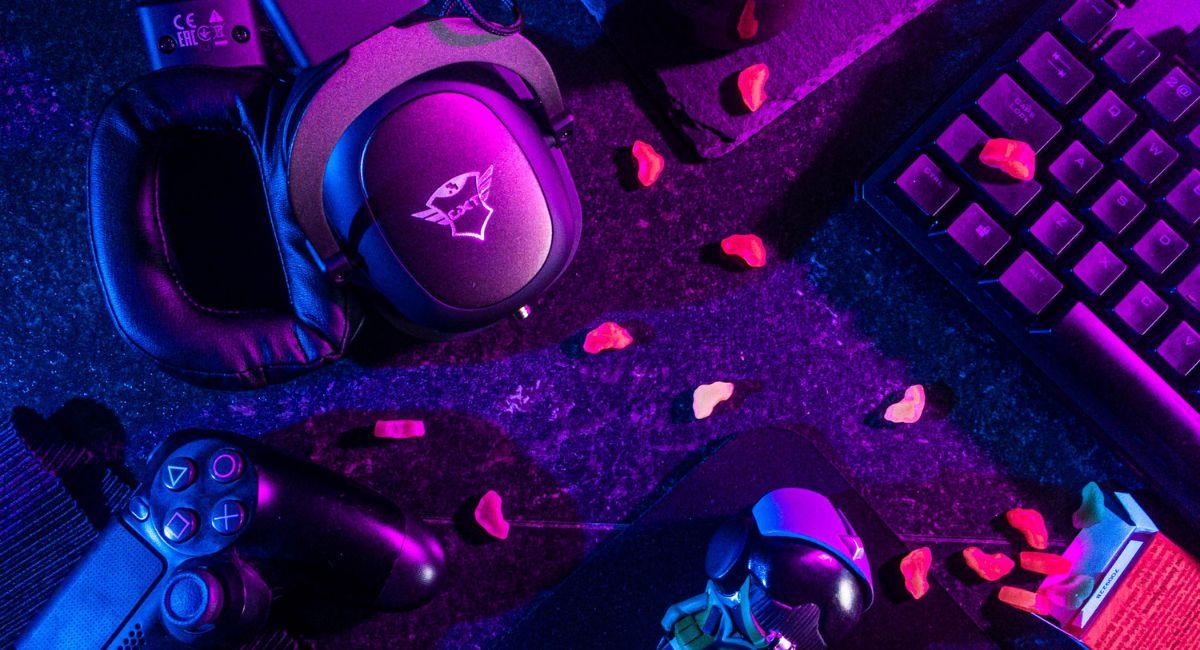Top 10 Ways Crazy Bitcoin Rewards In Blockchain Gaming Can Lead To Wider Adoption
Blockchain gaming has emerged as a revolutionary force, blending decentralized technology with the immersive world of gaming. As the industry continues to evolve, the integration of Bitcoin rewards stands out as a pivotal strategy for top blockchain gaming companies. This article explores the significance of Bitcoin rewards and why they are essential for driving wider adoption within the blockchain gaming ecosystem.
1. Enhancing User Engagement:
- Importance: Bitcoin rewards serve as powerful incentives, enhancing user engagement within blockchain gaming platforms.
- Impact: Users are motivated to participate actively, complete in-game tasks, and explore various features when they know they can earn Bitcoin rewards. This heightened engagement contributes to the overall success and popularity of blockchain games.
2. Introducing New Revenue Streams:
- Importance: Bitcoin rewards introduce new revenue streams for blockchain gaming companies, diversifying monetization strategies beyond traditional models.
- Impact: By offering Bitcoin rewards, gaming companies tap into the cryptocurrency economy. Players may spend more time and resources in games, leading to increased transactions, in-app purchases, and revenue generation.
3. Attracting a Broader Audience:
- Importance: Bitcoin rewards have a universal appeal, attracting a broader audience to blockchain gaming.
- Impact: Cryptocurrency enthusiasts, investors, and individuals curious about Bitcoin are drawn to gaming platforms that provide an opportunity to earn Bitcoin rewards. This inclusivity expands the user base and fosters diversity within the blockchain gaming community.
4. Fostering a Crypto-Friendly Ecosystem:
- Importance: Bitcoin rewards contribute to the creation of a crypto-friendly ecosystem within blockchain gaming.
- Impact: As players earn and use Bitcoin within gaming platforms, they become more accustomed to interacting with cryptocurrencies. This familiarity extends beyond gaming, encouraging users to explore other aspects of the crypto space, thus fostering a more crypto-savvy user base.
5. Increasing Retention and Loyalty:
- Importance: Bitcoin rewards enhance user retention by building loyalty among players.
- Impact: Players who receive Bitcoin rewards are likely to remain engaged with a gaming platform for more extended periods. This loyalty is crucial for sustaining the success of blockchain gaming companies in a competitive market.
6. Boosting Marketing and User Acquisition:
- Importance: Bitcoin rewards serve as potent marketing tools, attracting new users to blockchain gaming platforms.
- Impact: Offering Bitcoin rewards creates a buzz within both the gaming and cryptocurrency communities, drawing attention to the platform. This increased visibility facilitates user acquisition, contributing to the growth of top blockchain gaming companies.
7. Demonstrating Blockchain’s Practical Use Case:
- Importance: Bitcoin rewards showcase a practical and tangible use case for blockchain technology within the gaming industry.
- Impact: Users experience firsthand the benefits of blockchain, such as transparency, security, and direct ownership of digital assets, through the receipt of Bitcoin rewards. This demonstration of real-world utility enhances the credibility and acceptance of blockchain technology.
8. Encouraging In-Game Economies:
- Importance: Bitcoin rewards stimulate the development of in-game economies, creating a vibrant and dynamic ecosystem within blockchain games.
- Impact: Players actively participate in buying, selling, and trading in-game assets using Bitcoin rewards, contributing to the growth of a self-sustaining and player-driven economy.
9. Global Appeal and Accessibility:
- Importance: Bitcoin rewards transcend geographical boundaries, providing global appeal and accessibility to players worldwide.
- Impact: Players from different regions, regardless of their local currencies, can participate in blockchain games and earn Bitcoin rewards. This global accessibility fosters inclusivity and a more diverse user base.
10. Pioneering Innovation in the Gaming Industry:
- Importance: Incorporating Bitcoin rewards positions top blockchain gaming companies as pioneers in merging gaming and blockchain technologies.
- Impact: Innovation attracts attention and establishes gaming companies as leaders in the industry. By integrating Bitcoin rewards, these companies set trends and inspire others to explore similar approaches, driving widespread adoption.
Also, read- Top 5 Decentralized Crypto Wallets For Beginners In 2024
Top 10 Tips and Tricks for wider adoption in Blockchain Gaming

Blockchain gaming presents a revolutionary fusion of technology and entertainment, offering unique opportunities for both players and developers. To foster wider adoption and create a thriving blockchain gaming ecosystem, consider these top 10 tips and tricks:
1. User-Friendly Onboarding:
- Simplified Wallet Integration: Streamline the onboarding process by integrating user-friendly wallet solutions. Minimize the complexity of wallet creation and management to ensure a smooth entry for non-crypto-savvy players.
- Guided Tutorials: Provide step-by-step tutorials within the game interface, guiding players on setting up wallets, purchasing assets, and understanding blockchain mechanics.
2. Seamless Integration of Blockchain:
- Backend Integration: Ensure that blockchain technology is seamlessly integrated into the game’s backend. Players should experience the benefits of blockchain without being burdened by its complexities.
- In-Game Transactions: Implement in-game transactions using blockchain for asset ownership, trading, and customization. This enhances the player experience by offering tangible and tradable digital assets.
3. Scalability and Low Transaction Costs:
- Scalable Solutions: Choose scalable blockchain solutions to handle a large number of transactions. Scalability is crucial to accommodate a growing user base without compromising performance.
- Low Transaction Costs: Opt for blockchain networks with low transaction fees. High fees can deter players from engaging in frequent in-game transactions, impacting the overall gaming experience.
4. Interoperability with Standard Gaming Platforms:
- Cross-Platform Compatibility: Foster wider adoption by ensuring interoperability with traditional gaming platforms. Players should seamlessly transition between blockchain and non-blockchain games.
- Integration with Existing Ecosystems: Allow players to utilize blockchain assets or tokens across various games and platforms. This interoperability encourages a broader adoption of blockchain gaming.
5. Engaging and Unique In-Game Economies:
- Player-Owned Assets: Foster wider adoption by enabling players to truly own in-game assets. Blockchain allows for true ownership, allowing players to trade, sell, or use their assets across different games.
- Dynamic Economic Systems: Create dynamic in-game economies where player actions impact the overall ecosystem. Reward players for contributing positively to the game environment, enhancing engagement.
6. Community Building and Social Features:
- Social Integration: Implement social features within the game, such as chat, forums, and guilds. Building a strong community fosters word-of-mouth marketing and attracts new players.
- Rewards for Community Contributions: Incentivize community engagement by rewarding players for contributing to discussions, creating content, or organizing in-game events. This strengthens the sense of community ownership.
7. Regular Content Updates and Events:
- Dynamic Gameplay: Keep players engaged with regular content updates, events, and challenges. Blockchain can enhance these updates by introducing new blockchain-based assets, NFTs, or limited-time offers.
- Exclusive Blockchain Rewards: Introduce exclusive blockchain-based rewards for completing in-game challenges or participating in events. This creates a sense of exclusivity and drives player participation.
8. Educational Initiatives:
- Blockchain Learning Hub: Establish an in-game learning hub to educate players about blockchain technology, the benefits of ownership, and the potential of blockchain gaming.
- Rewarding Learning: Incentivize players to engage with blockchain education content by offering in-game rewards or exclusive items. This encourages players to understand and appreciate the blockchain aspects of the game.
9. Leverage Play-to-Earn Models:
- Rewarding Gameplay: Implement play-to-earn models where players receive blockchain-based rewards for their time and achievements in the game. This attracts both gamers and those interested in blockchain-based incentives.
- Accessible Earning Opportunities: Ensure that earning blockchain rewards is accessible to all players, including those who may not traditionally participate in the blockchain ecosystem. This broadens the appeal of play-to-earn features.
10. Transparency and Community Feedback:
- Transparent Governance: Establish transparent governance mechanisms for the blockchain aspects of the game. Involve the community in decision-making processes related to updates, changes, and future developments.
- Responsive Development: Actively listen to community feedback and implement player-driven suggestions. This fosters a sense of ownership among players and helps in shaping a game that resonates with its audience.
By combining user-friendly experiences, seamless integration of blockchain technology, and a strong emphasis on community and engagement, blockchain gaming can break barriers and achieve wider adoption. The key is to create an environment where players not only enjoy the benefits of blockchain but also find the overall gaming experience compelling, rewarding, and accessible.
Welcome to the PAALmily! 🤝 @Gamegptofficial
We’re thrilled to integrate another custom PaalBot into a utility token community.
Prism is the next evolution of Rainmaker’s platform, aiming to unlock the world of blockchain gaming through a suite of on-chain gaming tools and… https://t.co/d6t8aZJ3w5
— PAAL AI 🧠🤖 (@PaalMind) January 17, 2024
Top 5 Case studies – how did these 5 top blockchain gaming companies lead to wider adoption
1. Axie Infinity:
- Innovation in Play-to-Earn: Axie Infinity, developed by Sky Mavis, introduced a play-to-earn model that allows players to earn cryptocurrency by participating in the game. This model, where players can breed, collect, and battle fantasy creatures (Axies), attracted a large user base seeking opportunities to earn real value through their in-game activities.
- Community Involvement: The game’s success is also attributed to strong community involvement. Players have a say in governance decisions, and the community actively contributes to the game’s growth through discussions, suggestions, and engagement.
2. Decentraland:
- Virtual Real Estate Ownership: Decentraland is a blockchain-based virtual world where users can buy, sell, and develop virtual real estate using MANA, its native cryptocurrency. The concept of true ownership of digital land appealed to a wide audience interested in virtual experiences and decentralized economies.
- User-Generated Content: Decentraland allows users to create and monetize their content within the platform. This emphasis on user-generated content and creativity has contributed to the platform’s popularity.
3. CryptoKitties:
- Introduction of NFTs to Mainstream: Launched in 2017, CryptoKitties is one of the first blockchain games that gained widespread attention. It allowed users to buy, sell, and breed unique digital cats, each represented as non-fungible tokens (NFTs).
- Scarcity and Rarity: The concept of limited and rare digital assets (NFTs) generated a sense of scarcity and exclusivity, attracting collectors and enthusiasts. This approach showcased the potential of blockchain in creating unique, verifiable digital assets.
4. Enjin:
- Blockchain Integration for Game Developers: Enjin, with its suite of blockchain tools, provides a platform for game developers to integrate blockchain elements seamlessly. It offers solutions for creating and managing in-game assets as NFTs.
- Interoperability: Enjin emphasizes interoperability, enabling developers to create blockchain-based assets that can be used across multiple games and platforms. This approach encourages the adoption of blockchain technology without requiring players to be deeply involved in the underlying blockchain mechanics.
5. The Sandbox:
- User-Generated Virtual Worlds: The Sandbox allows users to create, own, and monetize their gaming experiences by utilizing blockchain technology. Users can create virtual assets, including non-fungible tokens, and design their virtual worlds.
- Land and Asset Sales: Similar to Decentraland, The Sandbox leverages the concept of virtual real estate. It hosts regular land and asset sales, driving engagement and participation. The ownership of virtual assets on the blockchain adds an extra layer of value for users.
Key Commonalities Among These Companies:
- Blockchain Integration: All these companies seamlessly integrate blockchain technology into their gaming ecosystems, allowing users to own, trade, and monetize in-game assets securely.
- User Incentives: Play-to-earn models, virtual real estate ownership, and unique assets create strong incentives for users to participate actively in these blockchain games.
- Community Engagement: These companies prioritize community engagement, giving users a voice in governance decisions, encouraging feedback, and fostering a sense of ownership among players.
- Scarcity and Exclusivity: The use of limited and rare digital assets (NFTs) creates a sense of scarcity and exclusivity, driving demand and interest.
- Interoperability: Some companies focus on interoperability, allowing assets to be used across multiple games and platforms, enhancing the overall utility and value of blockchain-based assets.
These case studies demonstrate that successful blockchain gaming companies often leverage innovative models, prioritize community involvement, and create unique, verifiable digital assets to drive wide adoption within the gaming community.
Conclusion:
Bitcoin rewards play a pivotal role in the success and wider adoption of top blockchain gaming companies. Beyond serving as incentives, these rewards foster user engagement, introduce new revenue streams, and contribute to the creation of a crypto-friendly gaming ecosystem. As the synergy between gaming and blockchain continues to evolve, Bitcoin rewards stand out as a catalyst, propelling the industry into a new era of innovation, inclusivity, and global recognition.
Stay informed with daily updates from Blockchain Magazine on Google News. Click here to follow us and mark as favorite: [Blockchain Magazine on Google News].
Get Blockchain Insights In Inbox
Stay ahead of the curve with expert analysis and market updates.
latest from tech
Disclaimer: Any post shared by a third-party agency are sponsored and Blockchain Magazine has no views on any such posts. The views and opinions expressed in this post are those of the clients and do not necessarily reflect the official policy or position of Blockchain Magazine. The information provided in this post is for informational purposes only and should not be considered as financial, investment, or professional advice. Blockchain Magazine does not endorse or promote any specific products, services, or companies mentioned in this posts. Readers are encouraged to conduct their own research and consult with a qualified professional before making any financial decisions. The featured image used is just a creative depiction of the title and it does not intend to hurt sentiments of any person or institution. If it hurts anyone sentiments, please do not hesitate to reach out to Blockchain Magazine.

 Bitcoin
Bitcoin  Ethereum
Ethereum  XRP
XRP  Tether
Tether  Solana
Solana  USDC
USDC  Dogecoin
Dogecoin  Cardano
Cardano  Lido Staked Ether
Lido Staked Ether  TRON
TRON  Wrapped Bitcoin
Wrapped Bitcoin  Chainlink
Chainlink  Wrapped stETH
Wrapped stETH  Avalanche
Avalanche  Sui
Sui  Stellar
Stellar  Litecoin
Litecoin  Toncoin
Toncoin  Shiba Inu
Shiba Inu  LEO Token
LEO Token  Hedera
Hedera  USDS
USDS  Hyperliquid
Hyperliquid  Polkadot
Polkadot  WETH
WETH  MANTRA
MANTRA  Bitcoin Cash
Bitcoin Cash  Bitget Token
Bitget Token  Ethena USDe
Ethena USDe  Wrapped eETH
Wrapped eETH  Uniswap
Uniswap  Monero
Monero  NEAR Protocol
NEAR Protocol  WhiteBIT Coin
WhiteBIT Coin  Pepe
Pepe  Aave
Aave  Ondo
Ondo  Bittensor
Bittensor  Aptos
Aptos  Internet Computer
Internet Computer  Dai
Dai  Official Trump
Official Trump  Mantle
Mantle  Ethereum Classic
Ethereum Classic  Tokenize Xchange
Tokenize Xchange  OKB
OKB  Gate
Gate  Sonic (prev. FTM)
Sonic (prev. FTM)  sUSDS
sUSDS 




